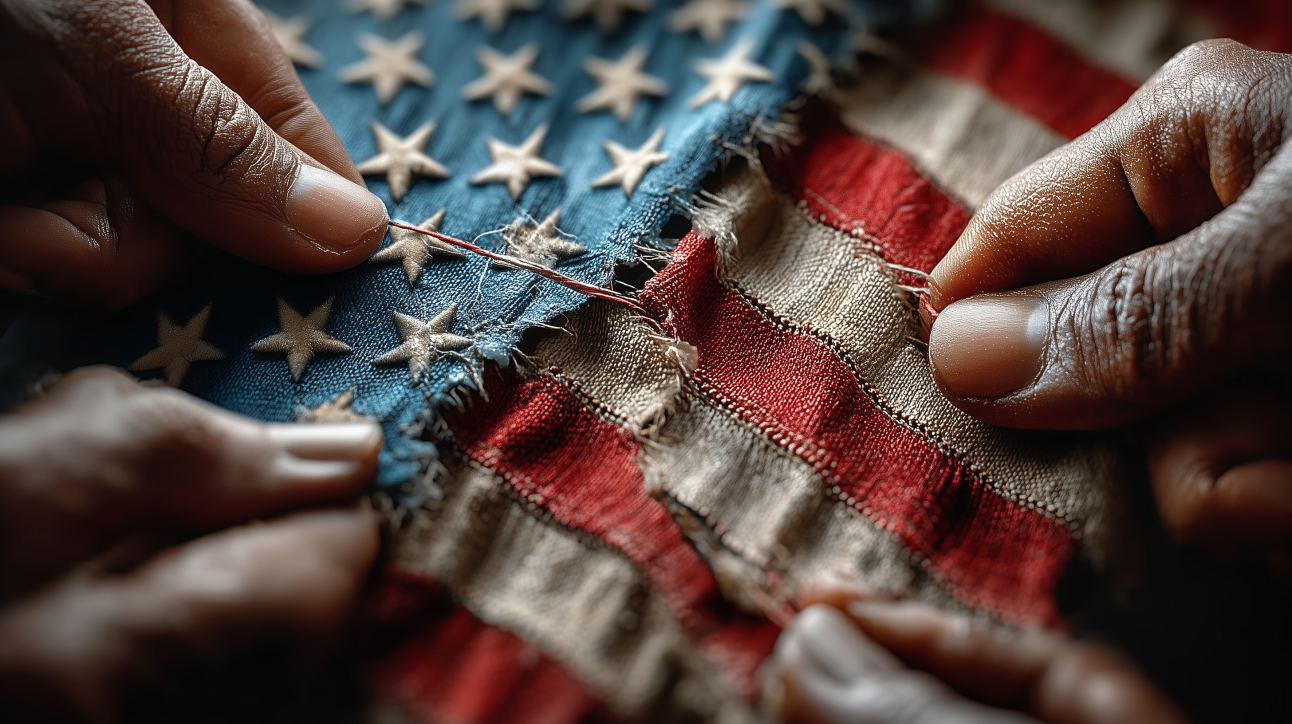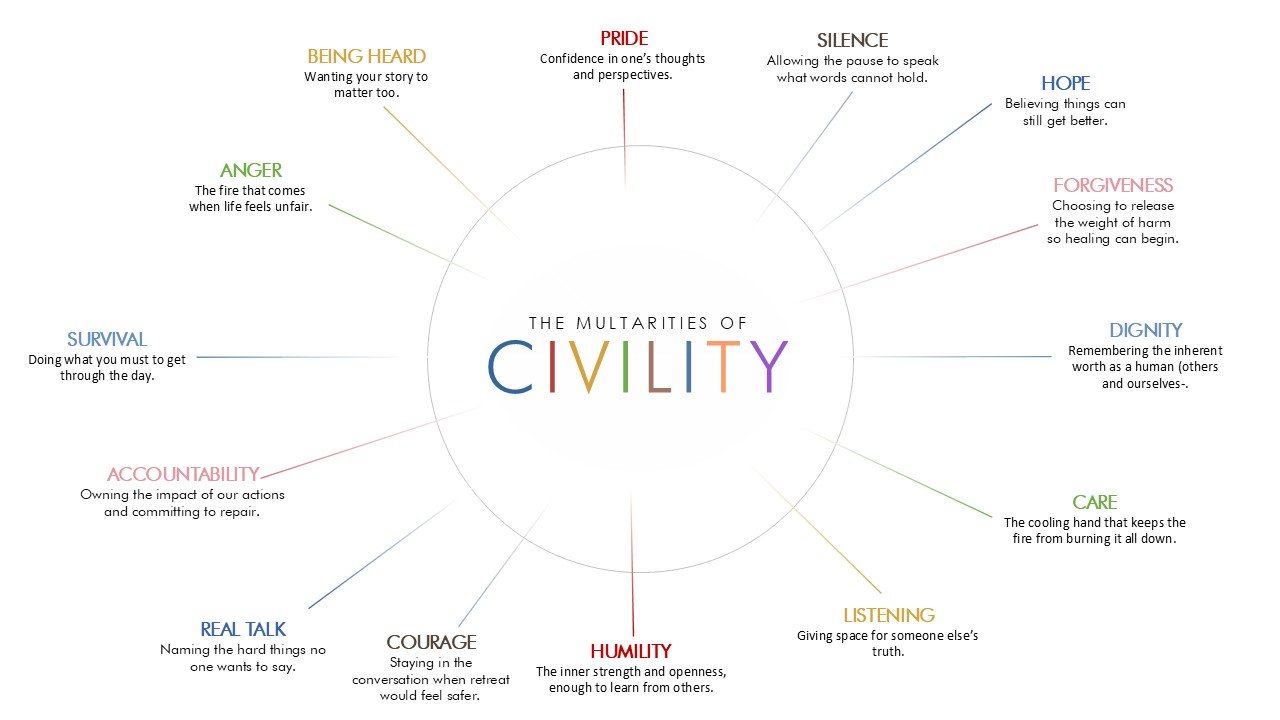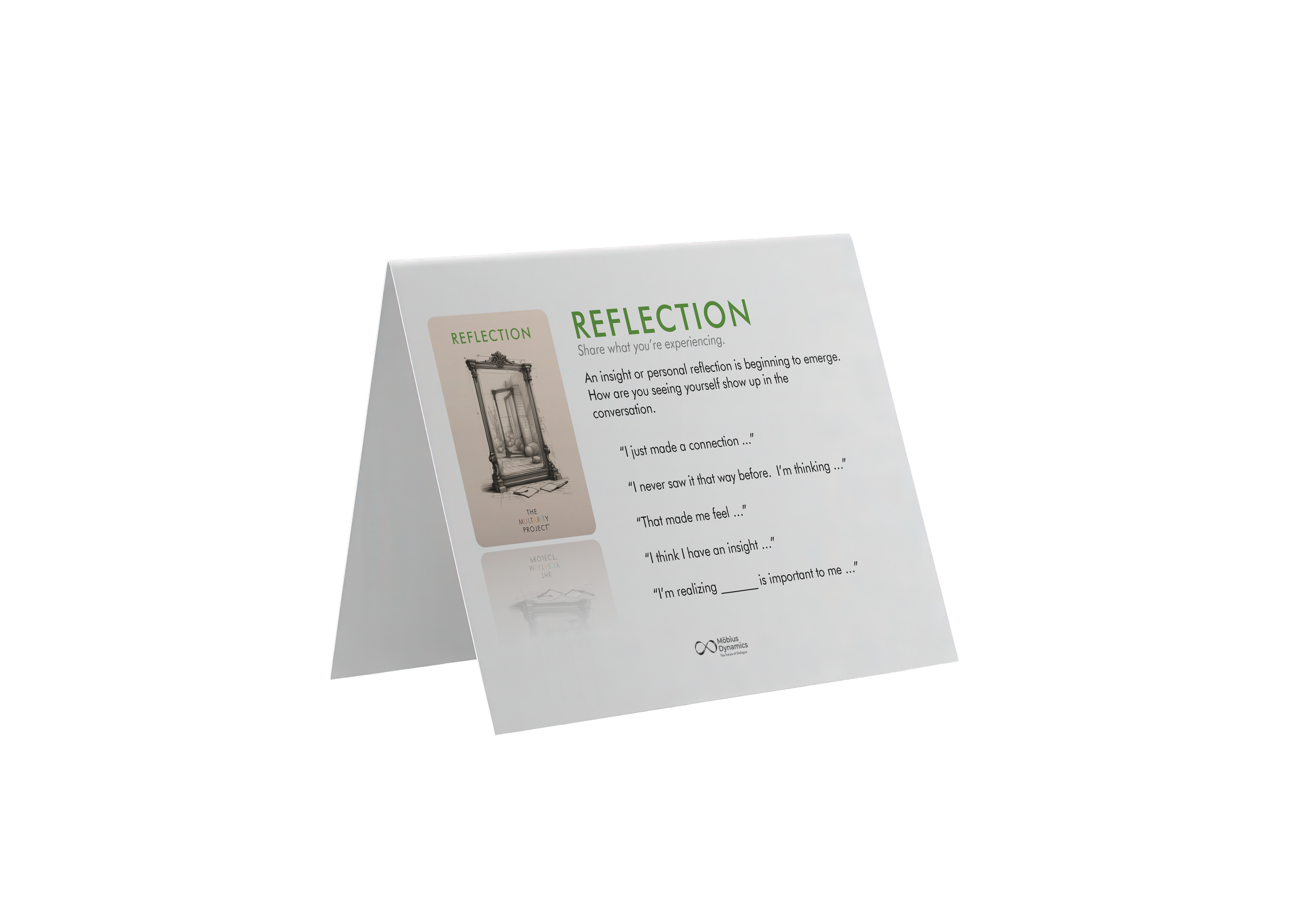
CIVILITY
10-22-25 SESSION
The conversation on CIVILITY explored what it really means to stay human with one another when tensions rise. Participants reflected on the courage it takes to remain in uncomfortable conversations, the discipline of listening to understand rather than to win, and the humility required to see difference as a teacher rather than a threat. Together, they uncovered civility not as politeness or restraint, but as the ongoing work of connection—an act of staying present even when leaving would be easier.
The dialogue revealed both anxiety and hope: fear of saying the wrong thing, and longing to be heard; frustration with division, and belief in repair. Through shared stories and questions, people began to imagine civility as something alive—a fragile light that depends on our willingness to protect it together.
Explore the art and conversation that emerged from this gathering, and consider what civility asks of you in the spaces where connection feels hardest to hold.
Key Themes:
Certain ideas surfaced again and again, showing just how complex and human the practice of civility really is. These themes highlight the everyday tension between safety and honesty, silence and voice, fear and courage. Together, they offer a clearer view of what it means to stay connected—to keep showing up, listening, and trying to understand one another even when it’s hard.
The Courage to Stay
Civility requires more than politeness—it demands courage. Participants reflected on the difficulty of remaining in conversations that feel tense or uncomfortable, recognizing that true understanding often lives on the other side of unease. Staying present became a metaphor for relational bravery: the choice to listen, to risk being misunderstood, and to value connection over comfort.
The Fragile Work of Connection
Civility was described as something living and vulnerable, like a flame that must be protected together. Participants expressed both the desire to be heard and the fear of saying the wrong thing, revealing how easily dialogue can fracture. The conversation highlighted the shared responsibility of tending to our relationships, especially when the climate around us feels divided.
From Awareness to Action
Across families, workplaces, schools, and communities, participants saw civility as a daily practice rather than an ideal. It begins with awareness—of self, of others, and of the spaces between us—and extends into action through empathy, forgiveness, and accountability. Civility, they agreed, is built through consistency: small acts that make respect visible.
As you explore these visual symbols of the conversation, where do you recognize your own thoughts or those of others within its narrative?
What symbols within the artwork speak to you, and what stories do you think they're trying to tell?
In what ways does the art challenge or expand your current perspectives on belonging?
How do the contradictions and paradoxes illustrated in the art resonate with your understanding or experience with belonging?
Surprising Discoveries:
Civility is not as simple as being kind or polite—it asks us to reconsider how we speak, listen, and stay present with one another. These discoveries surfaced as moments of awareness, challenging assumptions about what it means to be civil and revealing how connection, courage, and care are built in the everyday spaces between us.
Civility Is More Than Politeness
Many entered the room thinking civility meant being nice or avoiding conflict. What emerged instead was the recognition that civility often means leaning into discomfort—choosing honesty over harmony and presence over performance. It’s not about softening tension but learning to navigate it with respect and curiosity.
Disagreement Can Build Trust
Instead of seeing disagreement as a breakdown, people began to see it as a bridge. When handled with patience and openness, conflict became a doorway to understanding and deeper respect. The act of staying in dialogue, even through tension, was reframed as a profound expression of trust.
Community Is a Verb
By the end, civility was no longer seen as an abstract virtue but as something practiced together. It lives in small, consistent acts—listening, repairing, forgiving, and showing up again. People discovered that civility isn’t a social nicety; it’s the daily work of keeping the human fabric from tearing.
Silence Can Be an Act of Care
Participants realized that pauses in conversation are not always avoidance; sometimes they are a form of courage. The willingness to hold silence—to think, to listen, to allow emotions to settle—became a sign of civility rather than weakness. In that quiet space, empathy often begins.
Civility Begins Within
The conversation revealed that civility is not only how we treat others—it’s also how we regulate ourselves. Staying grounded, aware, and humble in moments of frustration or fear allows for more authentic connection. Personal mindfulness became a prerequisite for collective change.
THE MULTARITIES OF
CIVILITY
The Multarities of Civility illustrate the complex balance required to live and relate with integrity in a divided world. Each polarity—like Pride and Humility, Hope and Real Talk, Forgiveness and Accountability—reveals that civility is not a single virtue but a dynamic tension between coexisting truths. It asks us to navigate the space between confidence and openness, anger and care, silence and courage. Together, these multarities show that civility is not about avoiding conflict or pretending harmony, but about holding contradiction with grace—staying human with one another even when it’s hard.
Holding Multiple Truths at Once
Here’s another way of looking at the balance between opposing impulses that are both necessary for wholeness. Each synthesis shows that civility isn’t found in one pole or the other, but in the tension held between them.
A Closer Look at the Multarites of Civility
This conversation on Civility revealed that being civil isn’t about being nice—it’s about staying human when it would be easier to walk away. People spoke about the discomfort of honesty, the need for courage, and the quiet work of repair after misunderstanding. What emerged wasn’t agreement, but recognition: civility is a daily practice of holding tension—between truth and grace, anger and care, pride and humility—and choosing to stay in relationship through it all. These multarities show civility as something living, fragile, and real, built one brave conversation at a time.
Truth vs. Harmony
Civility exists in the fragile middle ground between honesty and peace. Truth demands clarity—it compels us to name what is real, even when it unsettles the room. Harmony seeks belonging and mutual safety, reminding us that relationships fray when we push too hard. Yet, too much truth without grace becomes cruelty; too much harmony without truth becomes avoidance. The work of civility is learning how to speak honestly without abandoning care, and to care deeply without abandoning what’s true. Every act of truth-telling risks disruption, but every act of avoidance erodes trust. Civility lives in that narrow space where honesty becomes a bridge rather than a weapon.
Safety vs. Openness
We long for safety—psychological, emotional, social. Safety gives us ground to stand on and permission to speak. But civility requires more than the comfort of control; it calls for openness—the willingness to be changed by what we hear. In conversation, safety and openness often pull in opposite directions: when we feel threatened, we close; when we feel secure, we open. The paradox is that safety cannot be sustained without openness, and openness cannot thrive without safety. Civility means holding both: creating spaces where people feel protected enough to risk being vulnerable, and brave enough to listen even when they feel exposed.
Anger vs. Care
Anger and care are siblings in disguise. Anger reveals what we value—it signals that something sacred has been crossed. Care teaches us how to respond without inflicting new harm. When anger burns alone, it consumes; when care exists without passion, it becomes complacent. Civility requires both the fire to confront injustice and the tenderness to protect what’s human in the process. This tension is not easily mastered. It asks us to let anger speak but not dictate, and to let care guide but not silence. Together, they transform outrage into advocacy and frustration into repair.
Pride vs. Humility
Pride gives us the backbone to stand for what we believe; humility gives us the heart to recognize we might be wrong. In isolation, each can become distorted—pride without humility turns to arrogance, humility without pride turns to self-erasure. Civility depends on their dance. We need enough pride to speak with conviction and enough humility to keep learning while we do. The tension between them invites maturity: the ability to hold our beliefs confidently while staying open to revision. True civility is not passive—it’s the art of being both grounded and teachable at once.
Forgiveness vs. Accountability
Forgiveness frees us from resentment, but without accountability it risks enabling harm. Accountability brings justice and clarity, but without forgiveness it can harden into punishment. Civility lives in the intersection of the two: the courage to name what went wrong and the grace to imagine what could be made right. This is not easy work—it asks both sides to face truth and extend mercy. To forgive is to refuse to be defined by injury; to be accountable is to take responsibility for repair. Together, they transform conflict from a wound into a possibility for reconciliation.
Courage vs. Silence
Courage and silence often appear to oppose one another, yet both are expressions of strength. Courage is the voice that breaks the stillness; silence is the space that gives voice its meaning. Too much courage without pause can overpower; too much silence without courage can conceal. Civility relies on knowing when to speak and when to listen—when words bring light, and when quiet carries the weight of respect. In a world addicted to noise, silence becomes its own form of courage: the willingness to hold space for what cannot yet be said.
Hope vs. Realism
Hope is the lifeblood of civility—the belief that relationships, communities, and systems can still heal. Realism keeps hope from drifting into fantasy; it forces us to confront the fractures as they are. One without the other becomes distortion: hope without realism is naïve, realism without hope is despair. Civility depends on both—the vision to imagine better and the honesty to face what prevents it. Hope keeps us engaged when things feel broken; realism keeps our engagement honest and effective. The two together form a rhythm of renewal: to see the world clearly, and to keep believing it’s worth trying to mend.
A CLOSER LOOK AT SYMBOLOGY
The Risk of Being Real
One door invites you into civility as control — polished words, quiet rooms, and the safety of agreement. The other opens into the wildness of being fully human — where truth breathes, feelings stir, and real connection costs something. The work of civility is to choose the living space between them: to speak with honesty without losing tenderness, and to stay in dialogue even when it trembles.
The Shelter We Build Together
Civility is not a solitary act; it’s the collective tending of a fragile fire. When storms rise, the light survives only because many hands form the shelter. To be civil is to protect the warmth of our shared humanity — not because it’s strong, but because it’s worth saving.
We Cross the Same Bridge
Each of us walks a separate path, but civility reminds us we share the same crossing. To be civil is to see the bridge beneath our feet — the invisible structure of shared existence that makes every encounter possible. Even when we walk from opposite ends, we meet in the middle of something larger than us both.
The Cost of Contempt
Incivility doesn’t just destroy relationships — it fractures the self. When we lash out or dehumanize another, something within us breaks too. Civility is not a social courtesy; it’s self-preservation — the act of holding one’s own integrity together in the face of disintegration.
The Shattering of Illusions
At the edge of every argument lies a mirror — and when it cracks, we’re forced to see what lies beneath our assumptions. Civility begins not when the mirror stays intact, but when we dare to look into its fragments and still find the other — and ourselves — reflected there.
Won’t You Stay?
There’s a moment in every hard conversation when both people could leave — but one chooses to stay. Civility lives in that fragile pause, where discomfort meets courage and silence holds more truth than words. When we stay, even trembling, we make room for connection to outlast fear — and for understanding to take root where distance once grew.
When Mended, It Rings Deeper
When the bell cracked, its tone changed—but it did not go silent. Its voice became deeper, more human, carrying the echo of everything it had endured. Civility works the same way: when trust fractures or words wound, what lingers is not perfection but resonance. The beauty is not in the flawless note, but in the courage to keep ringing, to keep calling one another back into the circle despite the breaks.
The Work of Repair
Civility isn’t the absence of conflict; it’s the steady work of mending what’s been torn. The needle represents truth—sharp enough to pierce, precise enough to repair. The thread represents care—flexible, enduring, and woven through every act of listening and reconciliation. Together, they show that healing conversation is not quick or clean—it’s the deliberate, tender act of stitching connection back into what’s been unraveled.
When the Curtain Falls Away
Civility lives in the tension between openness and protection—the desire to let the light in and the instinct to close the curtain. The window represents transparency, the courage to be seen and to see others clearly. The curtain represents discernment, the wisdom to know when to soften the view. Together, they remind us that connection requires both boundaries and bravery—the choice to let light through without erasing what needs shelter.
The Seed & The Flame
Civility lives between the slow work of growth and the fierce urgency of change. The seed teaches patience—the faith to wait, to tend, to trust that roots take time. The flame teaches passion—the courage to speak, to challenge, to spark what must begin. One without the other falters: patience alone grows silent; passion alone burns out. Together, they remind us that lasting transformation needs both heat and depth—fire to awaken, soil to sustain.
What We Bring With Us
If we could see the lived experiences of others—the moments that shaped them, the wounds they carry, the lessons they learned—we would better understand why they believe what they believe and respond the way they do. Every conversation holds more than two people; it holds entire histories meeting at once. When we sit with someone in conflict, we’re not just facing their words but their journey. Civility begins when we learn to see the person behind the reaction and meet their humanity with our own.
OVERFLOW
As you explore these additional images, consider the conversations that may have shaped them. What moments, insights, or tensions do you recognize? Where do you find traces of yourself and your own story within them?
Your Insights
We asked you to reflect on what was coming up for you, and these are the ideas you generated..
Emerging Big Questions
Participants voiced both urgency and introspection around civility:
Personal Reflection: “How am I being in the world?” and “What part of me isn’t learning to forgive?” show a turn inward, connecting civility with self-awareness.
Social Concern: Questions like “Why have we stopped seeing each other as human?” and “Why are we all divided as a society?” reveal collective worry about disconnection.
Education & Future: Many wondered, “Why is civility no longer taught to our kids?” and “How can we spread it — teach it — embody it?”
Community Repair: “What can be done to feel a more safe environment in our community?” and “How can we learn from those around us?” illustrate a shared desire for belonging, understanding, and courage in dialogue.
What Are You Imagining or Hoping Could Be Possible?
The collective imagination pointed toward unity and renewal:
Peace Across Divides: “Peace across identities,” “A government for the people, by the people,” and “Open & honest dialogue.”
Unity in Action: “Together we can make the future better,” “Lift others up instead of tearing down,” and “Community growth, not fear.”
Shared Humanity: “Love others even when we may not agree,” “To not judge each other,” and “Equality for all.”
Their hopes reveal an expansive, healing vision — one grounded in empathy, courage, and the belief that a more united, loving world is not only needed but possible.
Civility in Family
The family was seen as the root classroom of civility:
Modeling & Learning Together: “Leading by example,” “We all learn something new daily,” and “Teaching life into our children.”
Love and Respect: “Give grace and allow for learning,” “Listening: being kind to one another’s needs,” and “Love, respect, and understanding.”
Honest Communication: “Being able to be open and honest,” “Understand even when you don’t agree,” and “Respect, no judgment.”
Resilience in Conflict: “Patience,” “Forgiveness,” and recognition that “Politics can ruin relationships.”
Youth underscored that civility begins at home, where grace, understanding, and presence are practiced daily.
Civility in School
Students emphasized that schools are both the challenge and the opportunity for civility:
Teaching by Example: “Teaching by being” and “Teaching that different opinions are okay—we all matter.”
Relationships Over Rules: “Connection vs. bullying,” “Peer teaching,” and “Parent/student/teacher communication.”
Cultural Shift: “Respect for others’ spaces” and “Students drive learning.”
Values in Action: “Be the voice,” “Golden rule,” and “Being willing to learn with humility.”
They called for civility to be modeled and experienced, not merely discussed — a way of being that makes space for empathy, courage, and community-building.
Civility in Community
Youth envisioned civility as an active practice rooted in:
Showing Up & Listening: “Listening to hear instead of listening to respond” and “Showing up and celebrating each other.”
Unity & Uplift: “Uplifting those in our communities,” “Extending buckets of grace,” and “Love thy neighbor.”
Respect Across Difference: “Respecting that other people have a right to believe what they want.”
Shared Responsibility: Being a “safe space for your community” and “Standing up to negativity.”
Civility in community, they suggested, lives in everyday actions that reinforce connection, humility, and mutual care.
Across all posters, civility emerged not as politeness, but as a courageous form of connection — one that requires listening deeply, forgiving often, and showing up with compassion. Youth framed civility as a living practice spanning the self, family, school, and community — a practice that can heal division and build belonging when embodied through everyday action.
We Have Some Thoughts
TOOLS FOR HEALING CONVERSATIONS
Civility isn’t sustained by good intentions alone—it’s practiced through habits that help us stay grounded, curious, and connected when conversations get hard. The following tools are designed to help guide those moments: simple practices that turn tension into understanding and discomfort into growth. We are also happy to continue to support you in future conversations and listening sessions, where you see fit.
Click on the images below to download and continue to use the cue cards used in our session.
Letter to Youth Impact
October 22, 2025
Dear Youth Impact Team,
Thank you for being part of our conversation on Civility. You brought honesty, insight, and courage to one of the hardest questions we can ask right now: how do we stay human with one another when tensions rise?
Throughout the session, we witnessed how deeply you care about the world you are helping to shape. You listened with openness, spoke with conviction, and held space for one another with both strength and compassion. That balance—the ability to stay true to your voice while honoring someone else’s—is at the heart of civility.
What You Modeled
You showed that civility grows through connection. It emerges when people speak truth with care, stand firm in their beliefs, and remain open to understanding others. Through your willingness to stay present, you revealed the quiet power that lives in dialogue grounded in respect and empathy.
What You Discovered
Civility lives in the small, everyday choices: taking a breath before responding, asking a question instead of assuming, or staying in a conversation that feels uncomfortable yet necessary. These moments are where trust is built and understanding deepens.
What You Carry Forward
You have the opportunity to strengthen the culture of dialogue within the Youth Impact Center itself, and within your wider community. The ways you engage with one another can ripple outward—to your schools, families, and the Ogden community. Consider how these small practices can help you build a daily rhythm of civility:
Create space for real conversation. Choose a moment each week to gather and talk — about what you’re noticing in the world and how it’s affecting you. Use that time to listen first and speak with intention.
Practice courageous listening. When you hear an opinion that challenges you, pause before reacting. Ask a follow-up question. And then ask another one. As you articulated so beautifully, listening deeply means giving understanding a chance to grow.
Hold space for repair. When tension or misunderstanding happens, don’t abandon it — return to it. Find moments to check in and rebuild trust. The courage to revisit hard moments keeps relationships strong.
Model civility in your outreach. The young people you serve are watching you. Each time you choose calm over reaction, empathy over assumption, or curiosity over certainty, you’re showing what it means to stay human in conversation.
Bring the symbology generated from our conversation and ideas forward. Reflect on the symbols that spoke to you during the session. You might display one in your space, use it as a weekly reflection prompt, or invite others to share what civility means to them through art, writing, or dialogue.
Civility continues to grow each time you choose connection. The Youth Impact Center can become a living example of what this looks like—a place where people listen bravely, speak honestly, and repair relationships when they fracture.
As you move forward in your schools, communities, and friendships, remember that civility begins with presence. Keep showing up. Keep listening. Keep choosing connection, even when the path feels uncertain.
Thank you for the way you showed up—for your honesty, your courage, and your hope. The future of dialogue looks brighter because of you.
That we may grow,
Ginger & Chris
The Multarity Project® Co-Founders
New insights? Please share.
As you reflect on the depth and breadth of our conversation on Absence, we invite you to share any new gifts of insight that may have emerged since our session. Whether it's a new perspective, an unexpected realization, or a deeper understanding, we’d love to hear what continues to surface for you. We're listening!
























